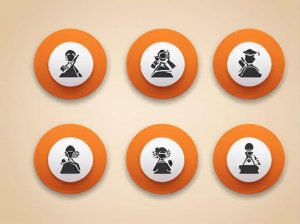Euclidean geometry is a critical component of Grade 12 mathematics, focusing on logical reasoning, theorems, and proofs. Many students find this topic challenging because it requires spatial reasoning, problem-solving skills, and a deep understanding of geometric relationships.
Mastering Euclidean geometry requires consistent practice, understanding of theorems, and strategic problem-solving techniques. This guide provides effective study strategies, important theorems, and exam preparation tips to help you excel in Grade 12 Euclidean geometry.
Understanding the Basics of Euclidean Geometry
Before diving into advanced problems, it is essential to understand the fundamental concepts of Euclidean geometry. This includes:
1. Definitions and Properties of Shapes
- Triangles: Equilateral, isosceles, and scalene triangles have different properties that are frequently tested.
- Quadrilaterals: Parallelograms, rectangles, rhombuses, and squares have unique properties that help in proving theorems.
- Circles: Chords, tangents, secants, and arcs play a crucial role in problem-solving.
2. Important Geometry Terms
- Congruence: When two figures have the same shape and size.
- Similarity: When two figures have the same shape but different sizes.
- Parallel Lines: Lines that never meet and have equal alternate and corresponding angles.
- Perpendicular Lines: Lines that intersect at 90 degrees.
3. Understanding Axioms and Postulates
Euclidean geometry is based on axioms (self-evident truths) and postulates (assumed truths specific to geometry). These serve as the foundation for proving theorems.
Key Theorems to Master
In Grade 12 Euclidean geometry, some of the most commonly tested theorems include:
1. The Pythagorean Theorem
Used for right-angled triangles:
where c is the hypotenuse.
2. Midpoint Theorem
The line segment joining the midpoints of two sides of a triangle is parallel to the third side and is half its length.
3. Theorems on Similar Triangles
Two triangles are similar if:
- Their corresponding angles are equal (AA similarity).
- Their corresponding sides are proportional (SSS similarity).
- Two sides are proportional, and the included angle is equal (SAS similarity).
4. Theorem of Proportionality (Intercept Theorem)
A line parallel to one side of a triangle divides the other two sides proportionally.
5. Circle Theorems
- Tangent Theorem: A tangent is perpendicular to the radius at the point of contact.
- Chord Theorem: The perpendicular bisector of a chord passes through the center of the circle.
- Angle at the Center Theorem: The angle subtended by a chord at the center is twice the angle at the circumference.
Understanding and practicing these theorems is essential for solving complex Euclidean geometry problems.
Effective Study Strategies for Euclidean Geometry
1. Master the Theorems and Their Proofs
- Memorize the key theorems and their statements.
- Understand why each theorem works by going through step-by-step proofs.
- Create flashcards for quick revision.
2. Learn to Write Clear and Logical Proofs
- Start with the given information and clearly state what needs to be proved.
- Use a step-by-step approach with proper justifications.
- Always include diagrams to make your reasoning clear.
3. Practice a Variety of Problems
- Work on basic problems to solidify fundamental concepts.
- Challenge yourself with higher-order problems from past exam papers.
- Attempt different types of proofs (direct, indirect, and contradiction proofs).
4. Use Geometry Software and Visual Tools
- Programs like GeoGebra can help visualize complex problems.
- Drawing clear and accurate diagrams makes problem-solving easier.
5. Solve Past Papers and Timed Exercises
- Practicing past Grade 12 exam papers helps you understand common question patterns.
- Set a time limit to improve speed and accuracy.
Common Mistakes and How to Avoid Them
1. Skipping Steps in Proofs
- Every step must be justified with logical reasoning.
- Avoid assuming unproven facts.
2. Misinterpreting Theorems
- Always read the exact wording of the theorem before applying it.
- Pay attention to conditions (e.g., if parallel lines exist, etc.).
3. Poor Diagram Interpretation
- Label your diagrams clearly.
- Highlight equal angles and sides for quick reference.
4. Forgetting Units and Notation
- Use proper notation for angles, sides, and segment lengths.
- Always include units of measurement when necessary.
How to Prepare for Euclidean Geometry Exams
1. Develop a Study Plan
- Dedicate at least 3045 minutes daily to geometry practice.
- Set specific goals, such as ‘mastering similarity theorems’ in one session.
2. Focus on Understanding, Not Just Memorization
- Instead of memorizing solutions, understand the reasoning behind each step.
- Teach someone else the best way to solidify your knowledge.
3. Work with Study Groups or Tutors
- Discussing problems with peers helps you see different approaches.
- If struggling, seek help from a teacher or tutor early.
4. Use Online Resources and Books
- Websites, video tutorials, and textbooks provide alternative explanations for difficult concepts.
- Use problem-solving books specific to Grade 12 Euclidean geometry.
Advanced Problem-Solving Techniques
1. Identify Patterns in Problems
- Many problems follow common patterns recognizing them saves time.
- Look for similar triangles, parallel lines, and cyclic quadrilaterals.
2. Work Backwards
- If youre stuck, start from what you need to prove and work backward to given facts.
3. Use Multiple Approaches
- Some problems have more than one solution try different theorems to find the best one.
4. Eliminate Unnecessary Information
- Some problems include extra details to confuse students focus only on whats relevant.
Mastering Euclidean geometry in Grade 12 requires a deep understanding of theorems, logical reasoning, and consistent practice. By following effective study strategies, avoiding common mistakes, and applying advanced problem-solving techniques, you can significantly improve your performance.
With regular practice, clear logical reasoning, and a solid grasp of key theorems, you can develop confidence and proficiency in Euclidean geometry, making it one of your strongest subjects in Grade 12 mathematics.



